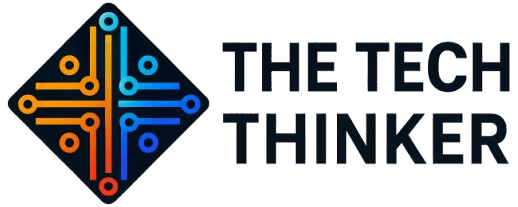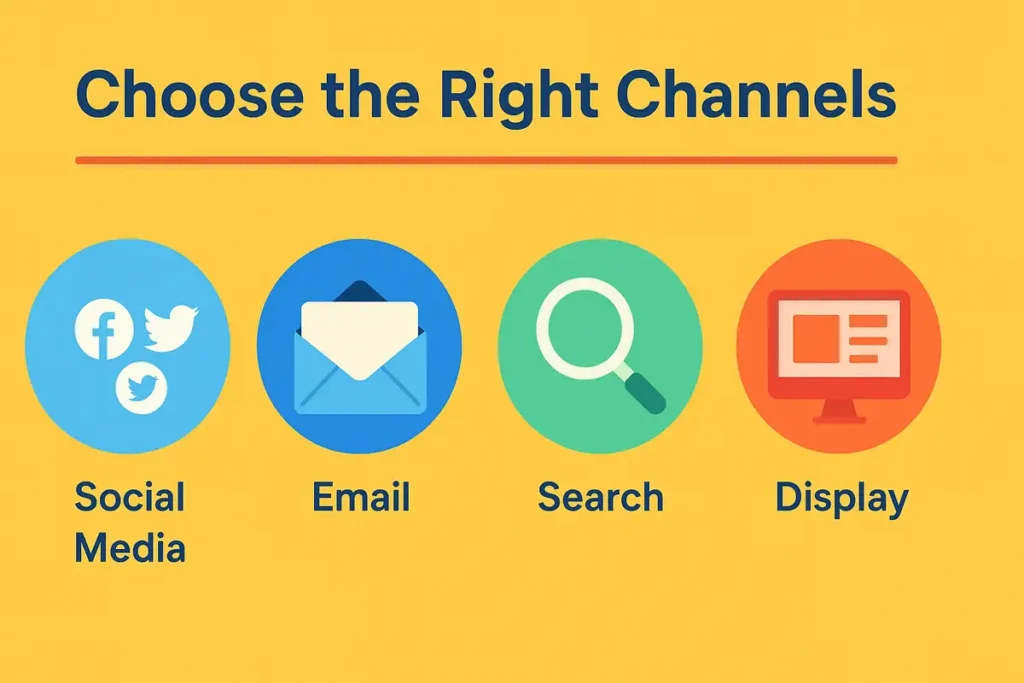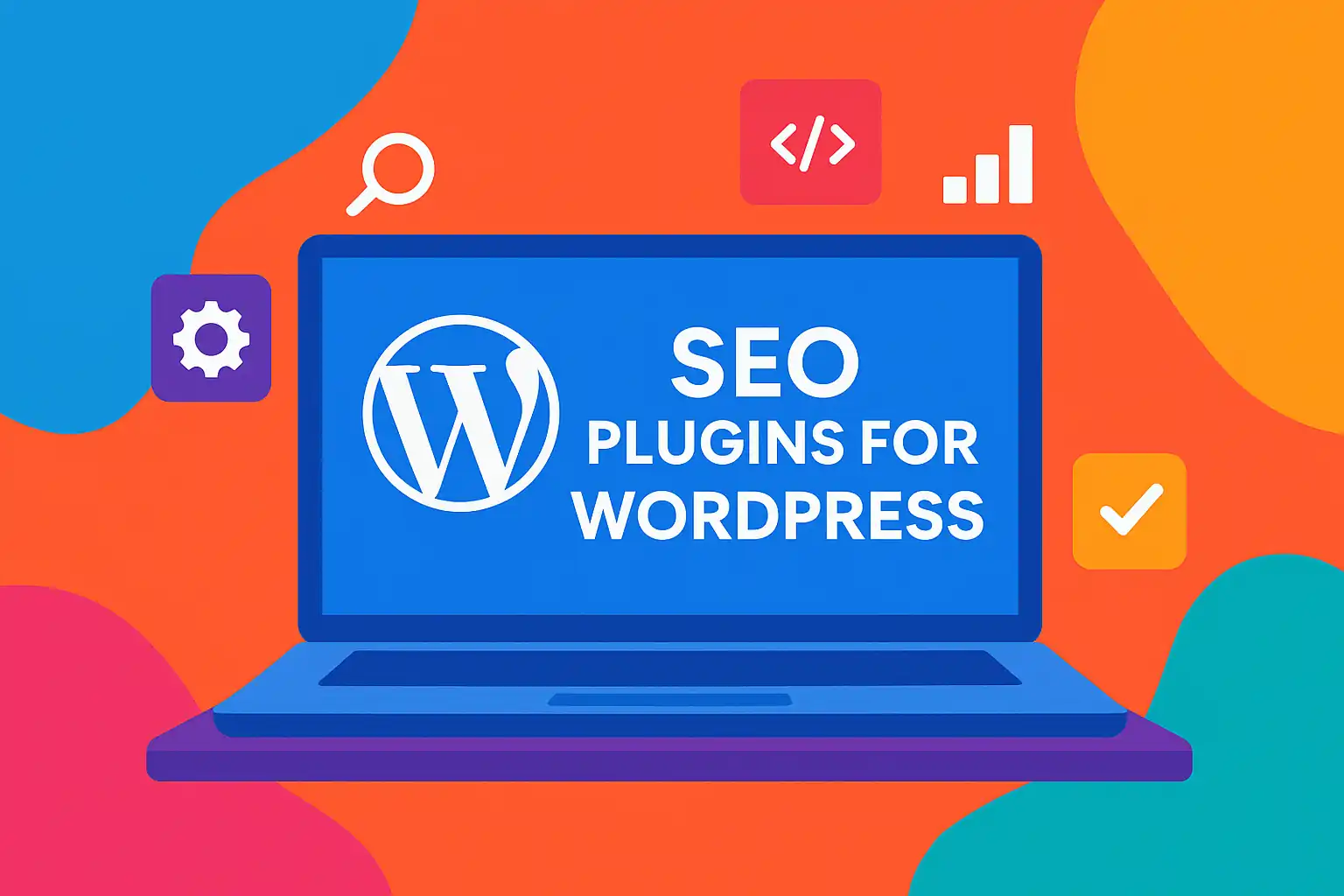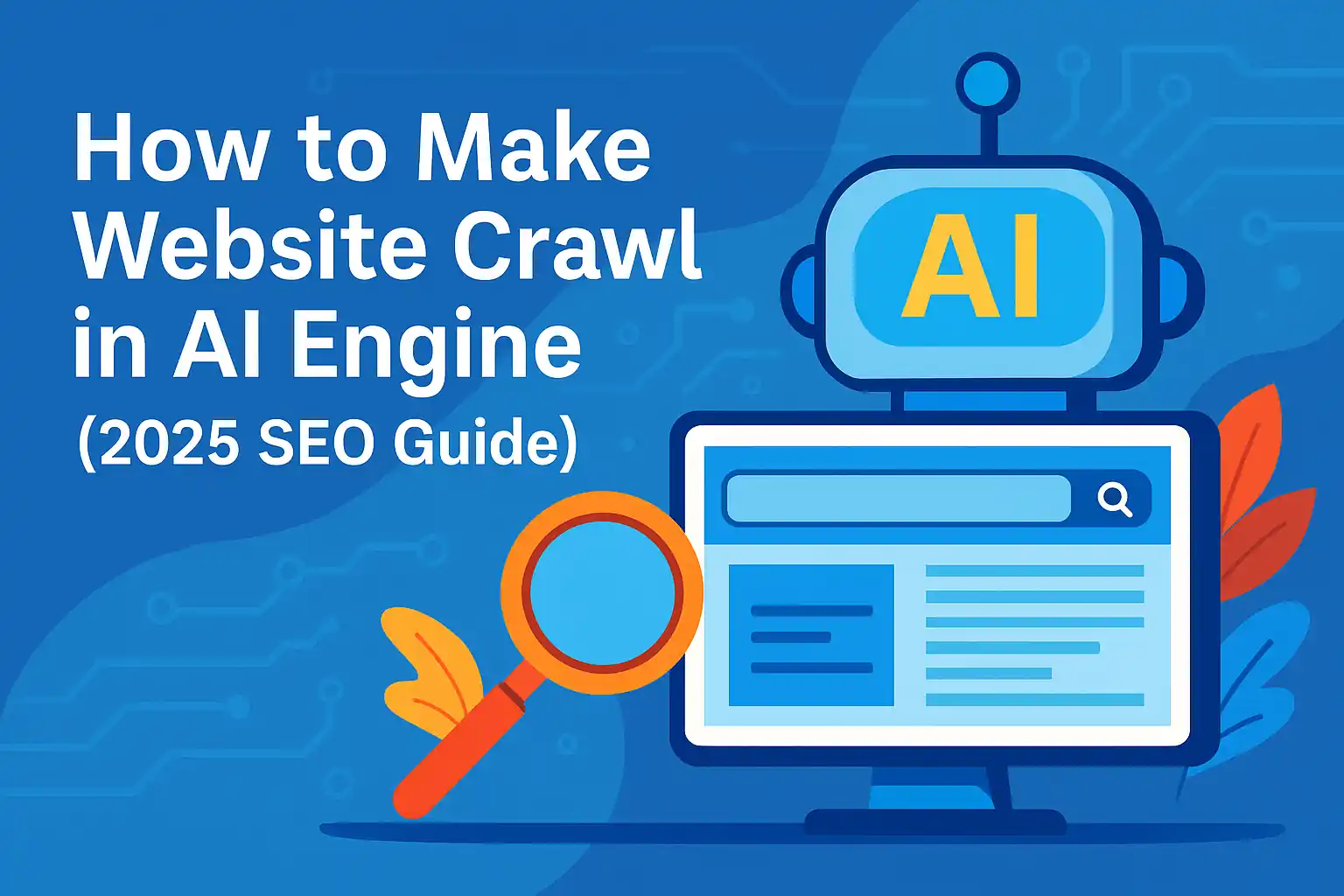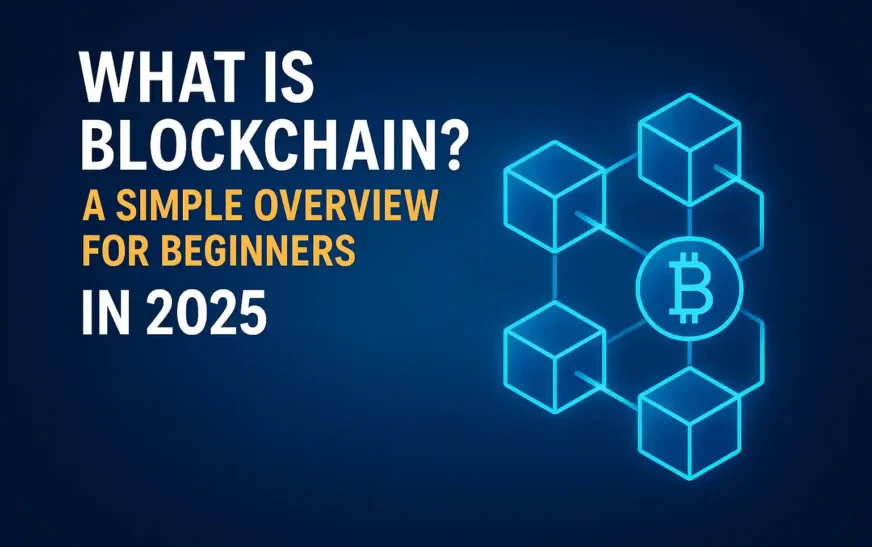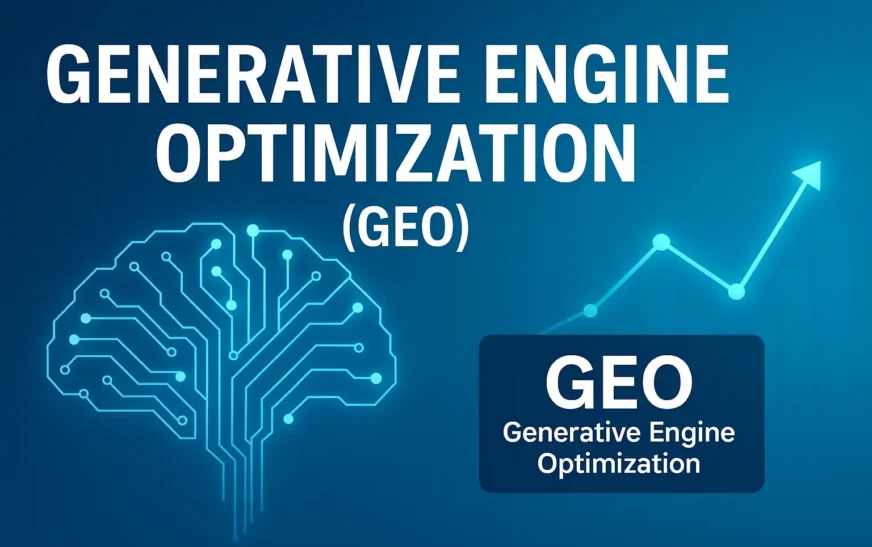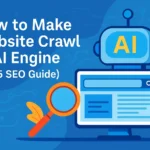Introduction
When we talk about Digital Marketing in 2025, we’re not just talking about ads and social posts — we’re talking about a rapidly evolving ecosystem that blends technology, creativity, and strategy to connect brands with their audiences in smarter, faster, and more personal ways.
Over the past decade, digital marketing has shifted from being an optional growth lever to becoming the backbone of modern business success. In 2025, this transformation is even more pronounced. Artificial Intelligence (AI) now powers personalization at scale, privacy laws are redefining how data is collected, and consumers expect a seamless, authentic experience across every channel.
This guide will take you from the basics to the advanced — explaining every major digital marketing channel, why it matters, common mistakes to avoid, and best practices to follow. Along the way, we’ll explore must-have tools, key trends, and a complete strategy framework so you can create campaigns that deliver measurable results.
Understanding Digital Marketing

What is Digital Marketing?
Digital marketing is the strategic use of online platforms, tools, and technologies to promote products, services, and brands. It includes everything from search engine optimization and paid ads to content creation and social media engagement. Unlike traditional marketing, which relies heavily on mass broadcasting, digital marketing offers precise targeting, instant feedback, and measurable outcomes.
Why It’s Important
It levels the playing field for all businesses. A small business with a smart online strategy can compete — and sometimes outperform — large corporations with massive budgets.
It enables precision targeting. Instead of showing ads to everyone, you can reach specific audiences based on their interests, behavior, and demographics.
It provides real-time performance data. You know instantly what’s working and what isn’t, allowing for quick adjustments.
In 2025, digital marketing is not just about visibility; it’s about creating meaningful connections that drive long-term loyalty and measurable business growth.
Core Digital Marketing Channels
Search Engine Optimization (SEO)
What is SEO?
SEO is the process of optimizing your website and its content to rank higher in search engine results. It involves on-page strategies (like keyword optimization and content quality), off-page factors (like backlinks), and technical improvements (like site speed and mobile optimization).
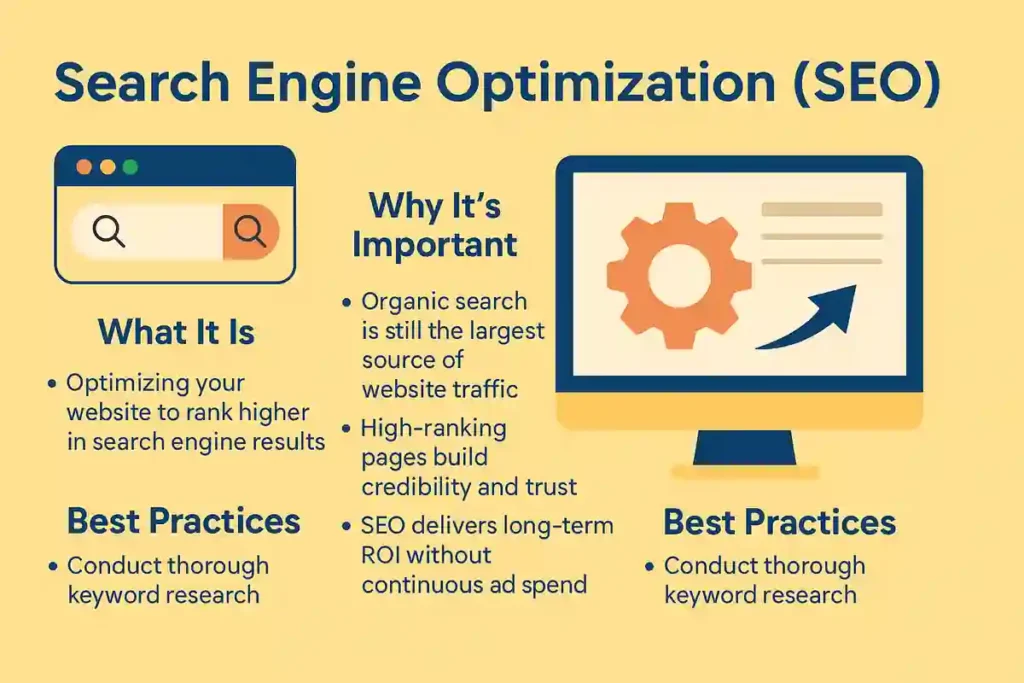
Why It’s Important
Organic search is intent-driven. People searching for a product or service are already interested, making them more likely to convert.
High rankings build trust. Users naturally see top search results as more credible and authoritative.
It’s cost-effective over time. Once you rank well, ongoing traffic can continue without constant ad spend.
Common Mistakes
Keyword stuffing. Overloading content with keywords makes it unreadable and harms rankings.
Ignoring technical SEO. Issues like broken links, slow loading times, and poor mobile design can lower visibility.
Letting content go stale. Outdated content can lose its search ranking quickly.
Best Practices
Do proper keyword research. Use tools like SEMrush or Ahrefs to find relevant, high-value terms.
Create content for people, not just search engines. Answer questions, provide solutions, and ensure readability.
Build quality backlinks. Partner with credible websites to increase domain authority.
Monitor performance regularly. Use Google Search Console to track rankings and fix issues early.
Technical SEO Audit
A strong digital marketing strategy isn’t complete without a solid technical SEO foundation. Technical SEO ensures that search engines can efficiently crawl, index, and understand your website’s content. Even the best-written articles can struggle to rank if there are technical barriers holding them back.
Key elements of a technical SEO audit include:
Site speed optimization: Faster loading pages improve both rankings and user experience.
Mobile-friendliness: Responsive design ensures smooth navigation across devices.
Crawlability and indexing: Using tools like Google Search Console to identify blocked pages or errors.
Fixing broken links: Removing or redirecting 404 errors to maintain link equity.
Structured data markup: Helping search engines better interpret your content.
For a complete step-by-step checklist, check out my full guide on 9 Powerful Technical SEO Audit Steps.
Pay-Per-Click Advertising (PPC)
What is PPC?
PPC is a paid advertising model where you pay each time someone clicks on your ad. It’s commonly used in platforms like Google Ads, Microsoft Ads, and social media networks.
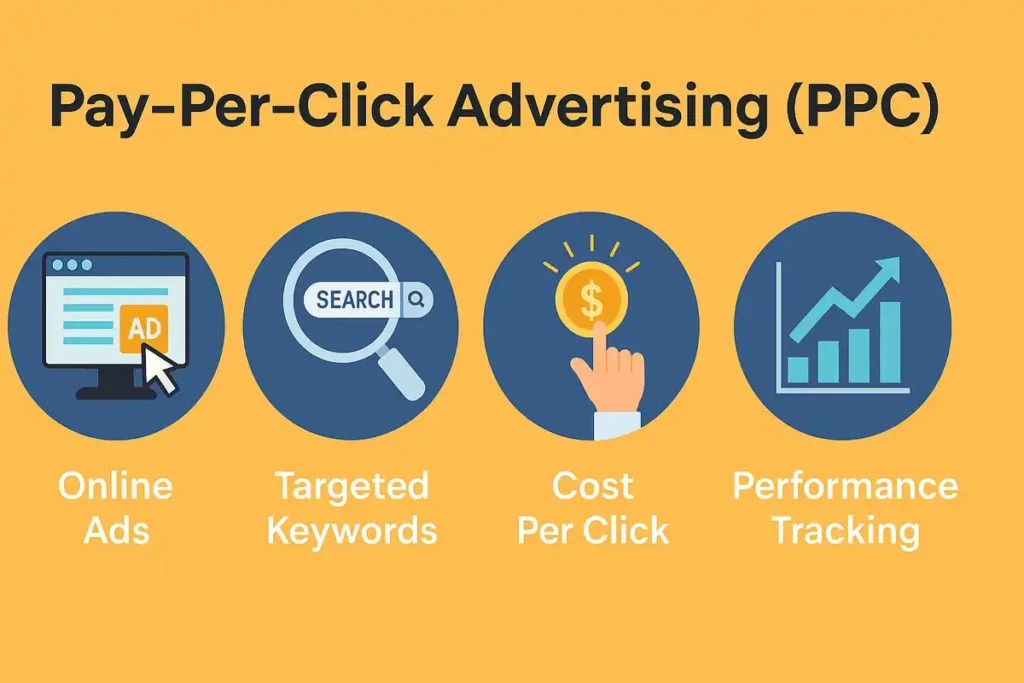
Why It’s Important
Immediate visibility. PPC can place you at the top of search results almost instantly.
Precise targeting. You can tailor ads based on location, device, audience behavior, and search terms.
Full control over budget and reach. You decide how much to spend and who sees your ads.
Common Mistakes
Broad targeting. Showing ads to everyone wastes money and reduces ROI.
Neglecting negative keywords. Without them, your ads may appear for irrelevant searches.
Weak ad copy. Poorly written ads can fail even with perfect targeting.
Best Practices
Set clear goals. Know whether you’re aiming for sales, leads, or awareness.
Test constantly. A/B test headlines, descriptions, and calls-to-action to find what resonates.
Use remarketing. Target users who have interacted with your brand before to boost conversions.
Social Media Marketing (SMM)
What is SMM?
SMM is the strategic use of social platforms like Facebook, Instagram, TikTok, LinkedIn, and YouTube to connect with audiences, build relationships, and promote products or services.
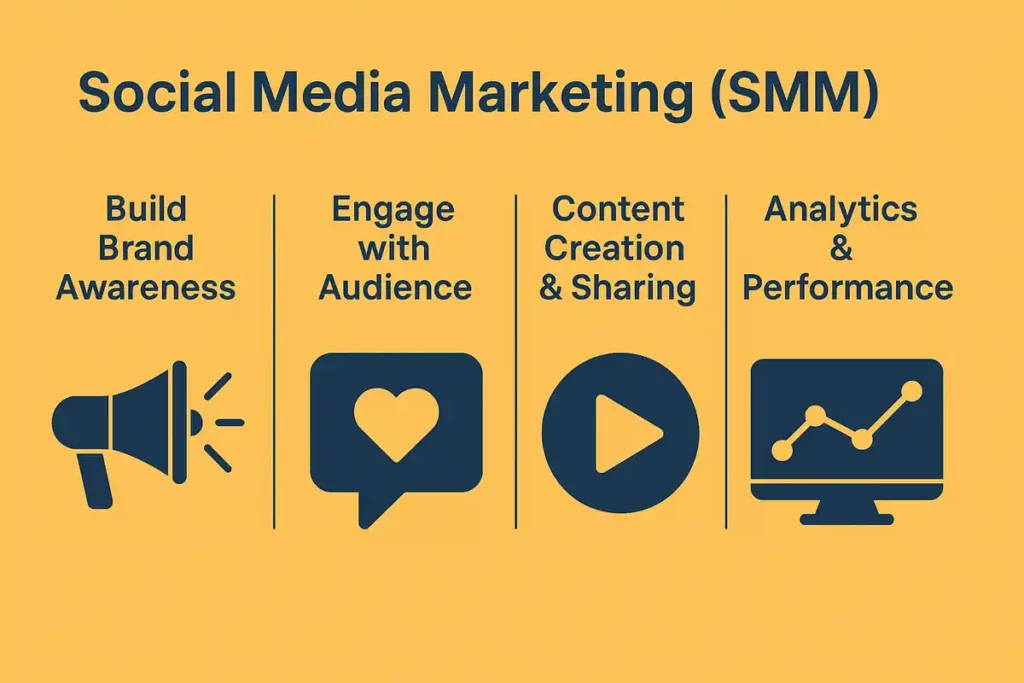
Why It’s Important
It builds brand personality. Social media is where your brand’s voice comes alive.
It drives discovery. Many customers discover new products and services through social feeds.
It supports all stages of the funnel. From awareness to loyalty, social can nurture customers.
Common Mistakes
Posting without a plan. Random posts without a goal or theme dilute your message.
Ignoring engagement. Failing to reply to comments or messages reduces trust.
Over-promotion. Brands that only sell without adding value lose followers.
Best Practices
Plan a content calendar. Align posts with campaigns, events, and trends.
Use platform-specific features. Stories, Reels, or LinkedIn Articles can boost reach.
Engage actively. Reply, comment, and interact to create community.
Content Marketing
What is Content Marketing?
It’s the practice of creating valuable, relevant content to attract and engage a target audience. This includes blog posts, videos, podcasts, eBooks, and webinars.
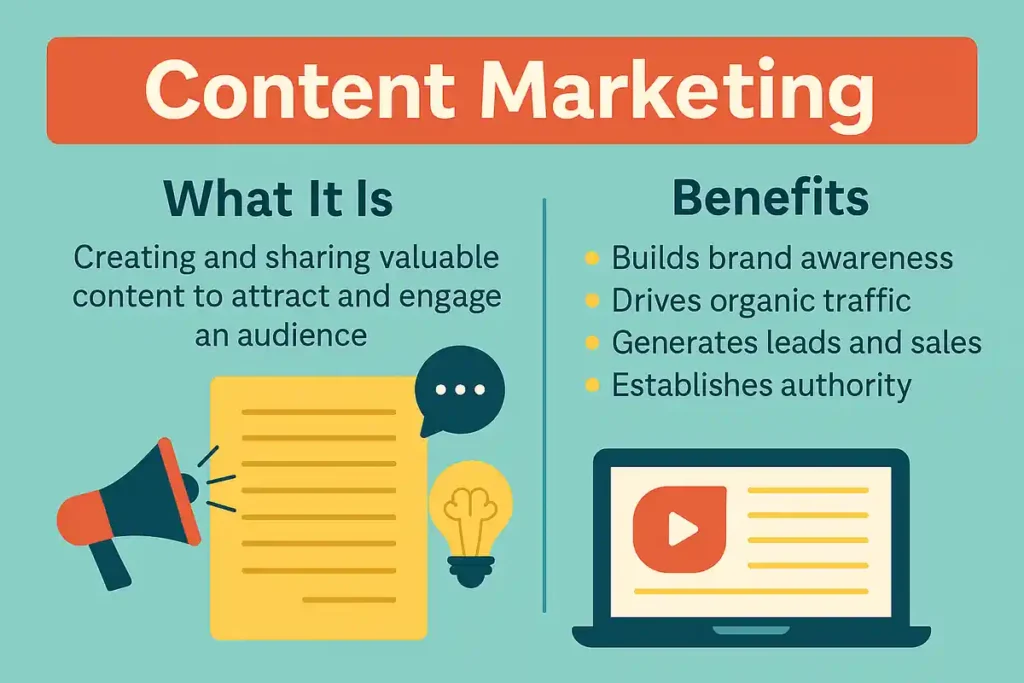
Why It’s Important
It builds authority. Quality content positions you as a trusted expert.
It powers other channels. SEO, social media, and email campaigns need strong content to succeed.
It nurtures customers. Educational content builds trust and drives action.
Common Mistakes
Quantity over quality. Churning out low-value content does more harm than good.
No clear target audience. Without knowing who you’re speaking to, content won’t resonate.
Not repurposing content. A single great article can become a video, infographic, or podcast.
Best Practices
Research your audience. Know their pain points, goals, and preferences.
Mix evergreen and timely content. Balance lasting relevance with trend-based pieces.
Measure results. Use analytics to see what content converts.
Email Marketing
What is Email Marketing?
Email marketing uses targeted messages to nurture leads, build relationships, and drive conversions directly in subscribers’ inboxes.

Why It’s Important
Direct, owned channel. No algorithm filters your messages.
High ROI. Email remains one of the most cost-effective marketing tools.
Personalization at scale. You can segment and customize content for each subscriber group.
Common Mistakes
Too many emails. Overloading inboxes leads to unsubscribes.
Generic content. Failing to personalize reduces engagement.
Ignoring mobile optimization. Most users read email on mobile.
Best Practices
Segment audiences. Group by behavior, purchase history, or demographics.
Use automation. Send relevant messages at the right time with drip campaigns.
Optimize for mobile. Keep designs clean and responsive.
Influencer Marketing
What is Influencer Marketing?
It’s partnering with individuals who have influence over your target market to promote your products or services.
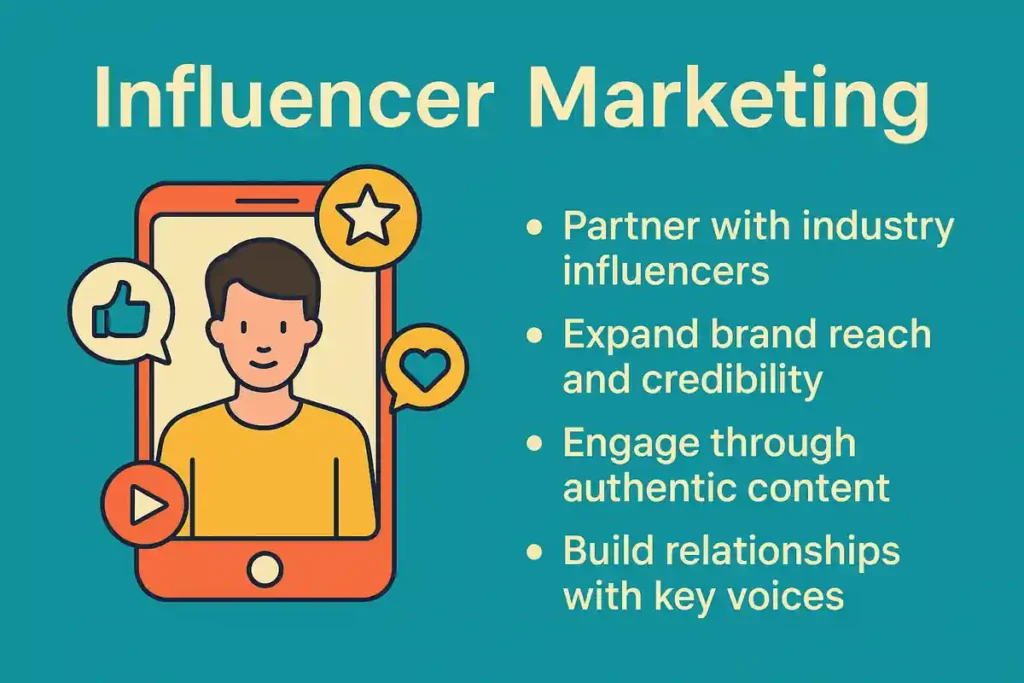
Why It’s Important
Leverages trust. Audiences trust influencers more than ads.
Targets niches. Micro-influencers can reach highly specific audiences.
Creates authentic content. Influencers can showcase products naturally.
Common Mistakes
Choosing based on followers alone. Engagement matters more.
No clear brief. Without guidelines, influencers may miss the brand message.
Not measuring ROI. Without tracking, you can’t tell if it worked.
Best Practices
Vet carefully. Check engagement, audience demographics, and reputation.
Set goals. Define success metrics before the campaign.
Track performance. Use unique codes or links to measure results.
Must-Have Digital Marketing Tools
SEO: SEMrush, Ahrefs, Moz — for keyword research, rank tracking, and backlink analysis.
PPC: Google Ads, Microsoft Ads — for creating and managing campaigns.
Social Media: Buffer, Hootsuite — for scheduling and analytics.
Content: Grammarly, SurferSEO — for writing quality, optimized content.
Email: Mailchimp, ConvertKit — for automation and segmentation.
Analytics: Google Analytics, Hotjar — for tracking user behavior and performance.
Key Trends Shaping the Future
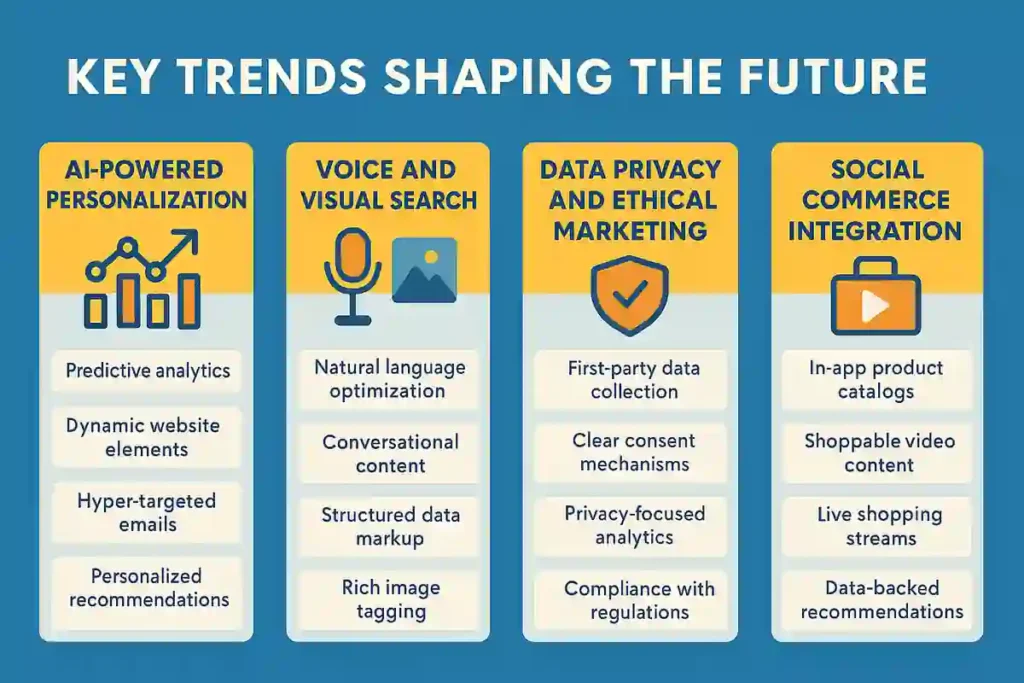
AI-Powered Personalization in Digital Marketing
AI is no longer just recommending “similar products” — it’s orchestrating the entire customer journey. From website content to ads and email campaigns, personalization is becoming real-time and deeply contextual.
Predictive analytics to forecast customer needs before they’re expressed.
Dynamic website elements that change based on user behavior in the moment.
Hyper-targeted email campaigns using AI-driven segmentation.
Personalized product recommendations across channels, not just on e-commerce sites.
Automated content adaptation for different audience personas without extra manual work.
Voice and Visual Search
Search behavior is evolving — people are using voice assistants for quick answers and visual search tools to find products instantly. This is changing how SEO is approached.
Natural language optimization for voice queries (“best running shoes under $100”).
Conversational content in FAQs and blogs to match spoken search patterns.
Structured data markup to help search engines deliver direct answers.
Rich image tagging for better indexing in visual search engines.
Optimized local listings since voice search is often location-specific.
Data Privacy and Ethical Marketing
Privacy regulations and consumer awareness are reshaping digital marketing. Brands that embrace transparency will win long-term trust.
First-party data collection through loyalty programs, surveys, and gated content.
Clear consent mechanisms so users understand how their data is used.
Privacy-focused analytics that work without third-party cookies.
Compliance with evolving regulations like GDPR, CCPA, and new regional laws.
Ethical messaging that reinforces brand credibility and responsibility.
Social Commerce Integration
Social platforms are becoming full-scale shopping destinations, blending discovery and purchase into one seamless experience.
In-app product catalogs on Instagram, TikTok, and Pinterest.
Shoppable video content where users can click and buy instantly.
Live shopping streams combining entertainment with sales.
Seamless checkout experiences without leaving the social platform.
Data-backed recommendations within the social feed to increase impulse purchases.
Building a Winning Digital Marketing Strategy
Set SMART Goals
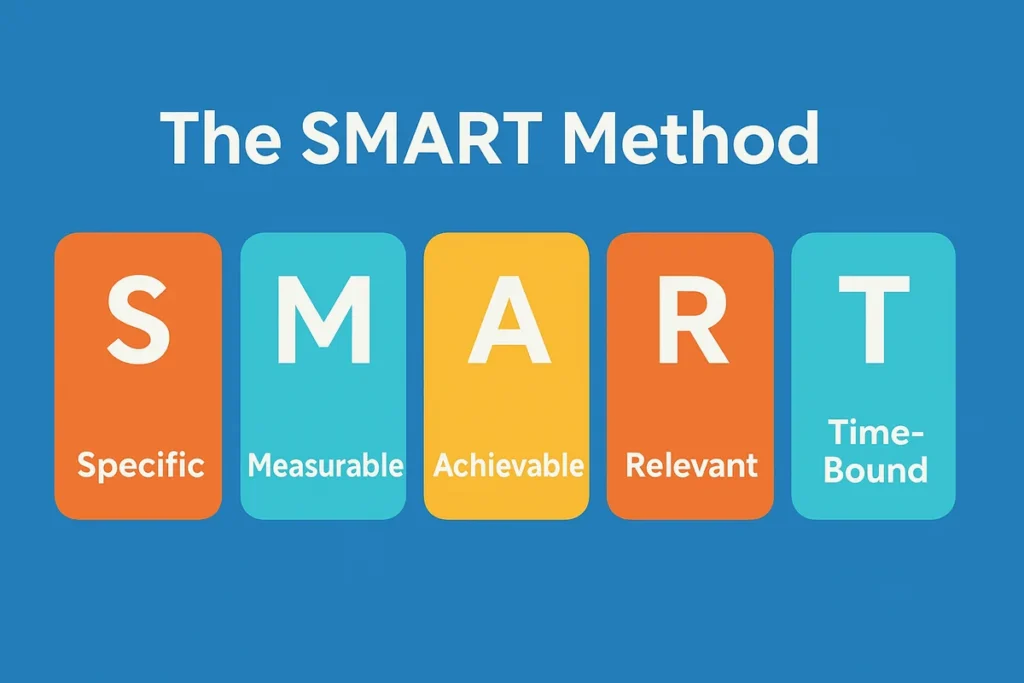
Setting goals might sound basic, but in digital marketing, vague ambitions like “get more followers” or “increase traffic” don’t cut it. You need SMART goals — Specific, Measurable, Achievable, Relevant, and Time-bound — to give your campaigns a clear direction and a way to measure success.
Specific: Instead of “increase sales,” set a target like “increase online sales of product X by 15%.”
Measurable: Make sure you can track progress with metrics like conversion rates, click-through rates, or lead volume.
Achievable: Ambition is great, but unrealistic goals can demotivate your team. Aim for what’s challenging yet possible.
Relevant: Tie your goal directly to your business objectives — if your priority is brand awareness, focus on reach and engagement rather than immediate sales.
Time-bound: Give yourself a deadline to keep efforts focused and urgent.
Clear, measurable goals will guide every marketing decision you make, from budget allocation to channel selection.
Understand Your Target Audience
Digital marketing success starts with knowing exactly who you’r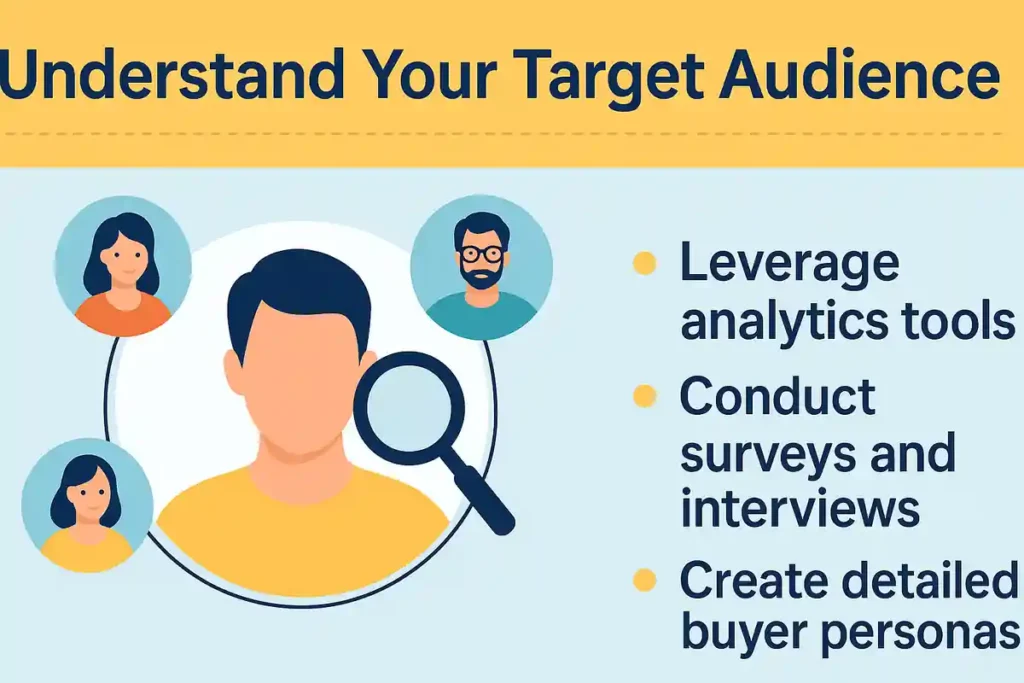 e speaking to. Your campaigns can only resonate if they’re built around the needs, preferences, and behaviors of your audience.
e speaking to. Your campaigns can only resonate if they’re built around the needs, preferences, and behaviors of your audience.
Leverage analytics tools. Platforms like Google Analytics, Meta Insights, or LinkedIn Analytics can tell you where your audience comes from, how they interact with your content, and what devices they use.
Conduct surveys and interviews. Go straight to the source — ask your customers about their challenges, needs, and buying triggers.
Create detailed buyer personas. Include demographics, interests, online behavior, and pain points so you can tailor your messaging effectively.
When you understand your audience deeply, your marketing becomes less about “selling” and more about connecting.
Choose the Right Channels in Digital Marketing
Not all marketing channels are created equal — and not every channel will be right for your goals. Choosing wisely prevents wasted budget and maximizes your chances of reaching the right people at the right time.
Match channels to audience behavior. If your audience spends hours on Instagram, focus there rather than spreading thin across platforms.
Consider the buyer journey. Search ads may work better for people ready to purchase, while blog content may be better for those still researching.
Test and refine. Start with a few high-potential channels, measure performance, and adjust based on results.
Selecting the right channels ensures that your efforts are focused where they’ll make the biggest impact.
Track, Measure & Optimize
One of digital marketing’s greatest strengths is the ability to track results in real time — but the data is only valuable if you use it to improve.
Monitor KPIs regularly. Metrics like ROI, conversion rate, bounce rate, and cost per acquisition can reveal strengths and weaknesses.
Run controlled experiments. Use A/B testing to compare headlines, visuals, and calls-to-action.
Act on insights quickly. If a campaign underperforms, pivot without waiting for it to fail entirely.
Tracking and optimizing should be an ongoing process, not an afterthought. The more you refine, the more efficient your marketing becomes.
Common Mistakes to Avoid in Digital Marketing
Relying only on one channel.
Ignoring mobile users.
Not adapting to algorithm changes.
Overlooking customer feedback.
Conclusion
Digital marketing in 2025 isn’t just about keeping up — it’s about staying ahead. The strategies, tools, and trends we’ve explored show that success now depends on a mix of smart technology adoption, deep audience understanding, and consistent optimization.
Whether it’s AI-driven personalization, adapting to voice and visual search, navigating privacy-first marketing, or capitalizing on social commerce, the opportunities are vast — but so are the challenges. The brands that will thrive are the ones willing to learn, test, and evolve continuously.
And remember — you don’t have to figure it all out alone. If you’re unsure about how to apply these strategies to your own business, or if you have questions about the latest tools, trends, or best practices, The Tech Thinker is here to help. Our mission is to simplify complex tech and marketing topics so you can focus on what matters most: growing your business.
Stay curious, keep experimenting, and never stop optimizing — the future of digital marketing is being shaped right now, and you have the chance to be part of it.
Digital Marketing FAQs
1. What is Digital Marketing and why is it important for businesses?
Digital Marketing is the practice of promoting products or services using online channels like search engines, social media, email, and websites. It’s important because it allows businesses to reach targeted audiences, measure results in real-time, and scale campaigns cost-effectively compared to traditional marketing.
2. How does Digital Marketing differ from traditional marketing?
Traditional marketing uses offline methods like TV, radio, and print ads, while Digital Marketing leverages online platforms such as Google, Facebook, and Instagram. Digital channels allow for precise targeting, interactive engagement, and measurable ROI.
3. What are the main types of Digital Marketing strategies?
The primary Digital Marketing strategies include:
Search Engine Optimization (SEO)
Pay-Per-Click Advertising (PPC)
Social Media Marketing (SMM)
Content Marketing
Email Marketing
Influencer Marketing
Affiliate Marketing
4. How can small businesses benefit from Digital Marketing?
Small businesses can benefit by reaching a larger audience with lower budgets, building brand credibility, competing with bigger brands, and tracking results to make data-driven decisions.
5. What is the role of SEO in Digital Marketing?
SEO (Search Engine Optimization) helps improve website visibility on search engines like Google. In Digital Marketing, SEO drives organic traffic, builds trust, and generates leads without ongoing ad costs.
6. How does content marketing fit into a Digital Marketing plan?
Content marketing provides valuable, relevant content to attract and retain customers. In Digital Marketing, it supports SEO, improves brand authority, and nurtures leads through blogs, videos, infographics, and more.
7. What are the most effective Digital Marketing tools?
Popular tools include:
Google Analytics (tracking and analysis)
SEMrush / Ahrefs (SEO research)
Hootsuite / Buffer (social scheduling)
Mailchimp (email automation)
Canva (design)
8. How can I measure the success of my Digital Marketing campaigns?
Track metrics like website traffic, conversion rate, click-through rate (CTR), cost per acquisition (CPA), and return on ad spend (ROAS) using analytics platforms and marketing dashboards.
9. Is social media marketing a part of Digital Marketing?
Yes. Social Media Marketing (SMM) is a major component of Digital Marketing that uses platforms like Facebook, Instagram, LinkedIn, and TikTok to build brand awareness, drive traffic, and engage with audiences.
10. How can Digital Marketing improve brand awareness?
By consistently sharing valuable content, optimizing for search engines, running targeted ads, and engaging with customers across channels, Digital Marketing builds strong brand recall and trust.
11. What are the most common mistakes in Digital Marketing?
Ignoring mobile optimization
Focusing only on selling, not adding value
Neglecting SEO best practices
Not tracking performance data
Overlooking the importance of content quality
12. How does email marketing contribute to Digital Marketing success?
Email marketing helps maintain direct communication with customers, deliver personalized offers, promote new products, and nurture long-term relationships—all while achieving high ROI.
13. What skills are required for a career in Digital Marketing?
Key skills include SEO, content creation, social media management, data analysis, email marketing, paid ads management, and basic design skills.
14. How is Artificial Intelligence changing Digital Marketing?
AI powers personalized recommendations, chatbots, predictive analytics, content creation, and automated ad targeting—making Digital Marketing more efficient and customer-focused.
15. What is the future of Digital Marketing in the next decade?
Expect growth in AI-powered campaigns, immersive experiences like AR/VR, voice and visual search optimization, stricter data privacy laws, and deeper personalization for customers.
Read our related Articles
Suggested External References for Digital Marketing
Google Digital Garage – Fundamentals of Digital Marketing
https://learndigital.withgoogle.com/digitalgarage
Free official course covering core concepts of Digital Marketing.HubSpot – The Ultimate Guide to Digital Marketing
https://blog.hubspot.com/marketing/digital-marketing
Comprehensive resource on strategies, tools, and channels.Moz – Beginner’s Guide to SEO
https://moz.com/beginners-guide-to-seo
SEO basics, keyword research, and ranking tips.Neil Patel – Digital Marketing Made Simple
https://neilpatel.com/what-is-digital-marketing/
Industry expert insights on Digital Marketing trends and strategies.Hootsuite – Social Media Marketing Guide
https://blog.hootsuite.com/social-media-marketing/
Social media strategies, scheduling tips, and analytics.Mailchimp – Email Marketing Field Guide
https://mailchimp.com/email-marketing/
Practical guide for creating and optimizing email campaigns.Ahrefs – Content Marketing Guide
https://ahrefs.com/blog/content-marketing/
Detailed breakdown of content strategies and performance tracking.WordStream – PPC University
https://www.wordstream.com/ppc
Step-by-step training for Google Ads and Pay-Per-Click advertising.
